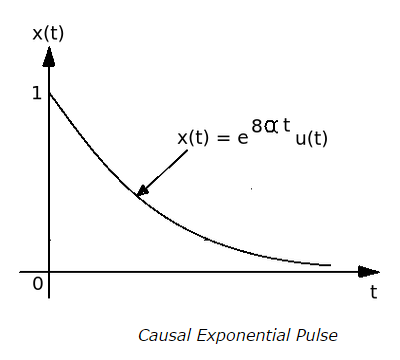1) Where does the maximum value of auto-correlation function of a power signal occur?
a. At origin
b. At extremities
c. At unity
d. At infinity
|
Answer
Explanation
|
ANSWER: At origin
Explanation:
No explanation is available for this question!
|
|
2) Which property is exhibited by the auto-correlation function of a complex valued signal?
a. Commutative property
b. Distributive property
c. Conjugate property
d. Associative property
|
Answer
Explanation
|
ANSWER: Conjugate property
Explanation:
No explanation is available for this question!
|
|
3) Which function has a provision of determining the similarity between the signal and its delayed version?
a. Auto-correlation Function
b. Cross-correlation Function
c. Both a & b
d. None of the above
|
Answer
Explanation
|
ANSWER: Auto-correlation Function
Explanation:
No explanation is available for this question!
|
|
4) Which among the below mentioned assertions is /are correct?
a. Greater the value of correlation function, higher is the similarity level between two signals
b. Greater the value of correlation function, lower is the similarity level between two signals
c. Lesser the value of correlation function, higher is the similarity level between two signals
d. Lesser the value of correlation function, lower is the similarity level between two signals
a. Only C
b. Only B
c. A & D
d. B & C
|
Answer
Explanation
|
ANSWER: A & D
Explanation:
No explanation is available for this question!
|
|
5) The ESD of a real valued energy signal is always _________
a. An even (symmetric) function of frequency
b. An odd (non-symmetric) function of frequency
c. A function that is odd and half-wave symmetric
d. None of the above
|
Answer
Explanation
|
ANSWER: An even (symmetric) function of frequency
Explanation:
No explanation is available for this question!
|
|
6) Which among the below mentioned transform pairs is/are formed between the auto-correlation function and the energy spectral density, in accordance to the property of Energy Spectral Density (ESD)?
a. Laplace Transform
b. Z-Transform
c. Fourier Transform
d. All of the above
|
Answer
Explanation
|
ANSWER: Fourier Transform
Explanation:
No explanation is available for this question!
|
|
7) What does the spectral density function of any signal specify?
a. Distribution of energy or power
b. Consumption of energy or power
c. Conservation of energy or power
d. Generation of energy or power
|
Answer
Explanation
|
ANSWER: Distribution of energy or power
Explanation:
No explanation is available for this question!
|
|
8) What would be the value of normalized energy for the causal exponential pulse shown below?
 a.
a. 8α
b. 1 / 8α
c. -1 / 8α
d. -8α
|
Answer
Explanation
|
ANSWER: -1 / 8α
Explanation:
No explanation is available for this question!
|
|
9) According to Rayleigh's theorem, it becomes possible to determine the energy of a signal by________
a. Estimating the area under the square root of its amplitude spectrum
b. Estimating the area under the square of its amplitude spectrum
c. Estimating the area under the one-fourth power of its amplitude spectrum
d. Estimating the area exactly half as that of its amplitude spectrum
|
Answer
Explanation
|
ANSWER: Estimating the area under the square of its amplitude spectrum
Explanation:
No explanation is available for this question!
|
|
10) Which theorem states that the total average power of a periodic signal is equal to the sum of average powers of the individual fourier coefficients?
a. Parseval's Theorem
b. Rayleigh's Theorem
c. Both a & b
d. None of the above
|
Answer
Explanation
|
ANSWER: Parseval's Theorem
Explanation:
No explanation is available for this question!
|
|